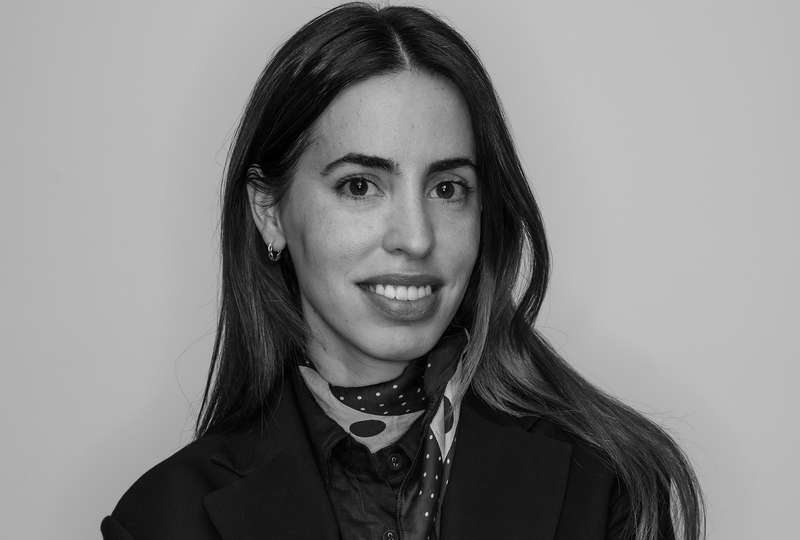Perspectives: Sofia Charro

October 26, 2022
Sofia Charro currently works as a project lead at West 8 in the North America office, where she designs resilient, climate-adaptive landscapes across the Americas – in California, New York, Texas, and Uruguay.
What drew you to landscape architecture?
I was born and raised in an urban environment in Buenos Aires, Argentina. Growing up, my family spent most weekends in the small town of Capitan Sarmiento where my father was born. There, I developed my first meaningful connection with land and soil, riding chestnut criollo horses across the long grass valleys of the Pampas.
During my adolescence, I enjoyed studying art and science and as a young adult I decided to pursue a career in architecture to explore both subjects together. After graduating from the University of Buenos Aires with a degree in architecture, I entered professional practice for a private firm designing innovative solutions to urban mobility and sustainable living environments. Subsequently, I joined West 8 in New York City where I shifted my focus from urban design to landscape architecture. I found that landscape architecture offered me a grander medium to reflect on space and context rather than object, and provided me greater agency to foster others’ connection to land and soil.
What is driving you professionally right now?
I am inspired by interdisciplinary, collaborative approaches to design. I find myself most stimulated when working with mixed groups of professionals — scientists, climate-resilience experts, risk specialists, and engineers — all collaborating on a common vision.
In California, we are working on a large-scale master plan situated near a bay ecosystem. In close collaboration with engineers and sea-level rise experts, we are leveraging stormwater management as one of the main drivers of the design. The plan focuses on creating new ecologies that can capture stormwater and provide urban cooling, immersive nature experiences, and local biodiversity. With the ultimate goal to provide a science-based framework for adaptation, the vision distinguishes different scales of interventions combining flood management needs with the enhancement of ecological and recreational corridors.
What challenge is landscape architecture allowing you to address right now?
Currently, our profession continues to watch as global warming and rising sea levels increase the severity of rainstorms, drought, wildfires, flooding, and other natural calamities. One of the most consequential challenges in our field today is creating responsive and resilient designs to mitigate the effects of climate change. We must bifurcate our approach to this issue, first by helping those affected heal, and second by designing resilient solutions that protect local communities.
In fact, in Uruguay we are developing a masterplan for 8km of waterfront along the Uruguay River. The effects of flooding and natural aggression amplify the challenges left to us by the city’s urban sprawl and car-centric spaces. The plan aims to protect, activate and connect the waterfront edge with the local community of Paysandu. Our approach is to build a living adaptive edge with different nature-based solutions engineered to work like natural systems, and therefore adapt to different tide levels. We believe this dynamic will enable the affected community to transform its relationship with the river.
What challenge would you give emerging leaders?
I would encourage emerging leaders to pursue professional initiatives outside the billable hour and compete for funding opportunities outside the office.
In 2020, I connected with a group of Latin American designers at the CUT|FILL UNconference, sponsored by West 8 and others. We created the Tierra Media Project, with a vision to amplify Latinx voices in the landscape architecture community. In 2021, we drafted a narrative of our voices, and this collaboration was selected for the LAF Fellowship for Innovation and Leadership with Linda Chamorro as the Fellow.
Pursuing independent opportunities in architecture such as this one has brightened my professional passions with a personal light. The Tierra Media Project has provided me with a deep sense of community rooted in my heritage. I am excited to see what the future brings for our team.
Where do you think the profession needs to go from here?
I am hopeful that, as a collective, we are transitioning to a profession that emphasizes interdisciplinary, collaborative approaches embracing art and science in harmony. I am hopeful for our profession to continue to push for innovative solutions that are able to tackle the defining issues of our time.
LAF's Perspectives interview series showcases landscape architects from diverse backgrounds discussing how they came to the profession and where they see it heading. Any opinions expressed in this interview belong solely to the author. Their inclusion in this article does not reflect endorsement by LAF.











